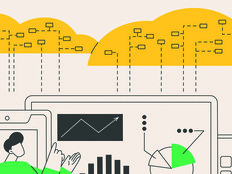Product Review: Microsoft SQL Server 2012
Microsoft’s SQL Server 2012, the latest version of its SQL Server platform, is in many ways a response to the demands of the cloud and “big data” applications. SQL Server has evolved from its humble beginnings as a relatively easy-to-use and less expensive database (compared with high-end commercial enterprise databases) for small-scale transactions and analysis into an organizational workhorse, especially for agencies looking to leverage a cloud architecture.
SQL Server 2012 comes in three license configurations: Standard edition, Enterprise edition and the new Business Intelligence edition. The Standard version, which is oriented toward smaller organizations, lacks some of the new enterprise features but still has many features that make it well suited to a number of applications for organizations of many sizes. The Business Intelligence edition delivers many of the high-end data analysis features of the Enterprise edition, minus a few enhanced features.
Advantages
SQL Server 2012 supports connections to external big-data sources for analytics. It can connect to Apache Hadoop, for example, running on a remote cluster of machines passing queries and pulling the results into SQL Server itself for further analysis. Other types of nonrelational data can be brought into SQL Server as well, using its built-in data connectors.
SQL Server 2012 also makes it easier to build databases and applications on one server and move them to another server or to a cloud service, such as those based on Windows Azure, Microsoft’s cloud platform.
The database software can be easily integrated with Microsoft’s Office desktop applications through Open Database Connectivity connections. SQL Server’s data mining add-ins for Microsoft Office let Excel and Visio users access the reporting and analytics features of SQL Server itself, allowing them to take advantage of server-side “predictive analytics” to explore relationships within data.
A major new feature for the Business Intelligence and Enterprise editions is PowerView, a web-based self-service BI toolkit that integrates with SharePoint. It allows users to do “mash-ups” of different pre-built reports from different servers across the network and pull the results into presentations and other documents.
99.9999%
Uptime delivered by Microsoft SQL Server 2012
SOURCE: Microsoft
Why It Works for IT
For Windows-oriented shops, SQL Server 2012 offers advantages over other databases from a management standpoint. Installation of SQL Server, despite the complexity of the software, is fairly easy to automate and control, and SQL Server’s Management Studio gives administrators a high level of control over database deployment.
In a data center or cloud environment, administrators can install SQL Server 2012 within a Windows Server 2008 server core installation — which can be remotely managed through Management Studio and requires less server maintenance than the full Windows Server environment. A similar version of the new Windows Server 2012 is also supported. Driven by Microsoft’s PowerScript, these installations can easily be virtualized and imaged to reduce the cost of deployment of SQL Server instances within a private or shared cloud infrastructure.
Disadvantages
Despite having connectors to non-Windows data sources, SQL Server 2012 is bound to the Windows Server platform — which means it’s bound to Windows-compatible hardware. While the Enterprise edition is priced per server and per core, the Standard and Business Intelligence editions of SQL Server 2012 require client access licenses for each database user (though those “users” could be applications).







